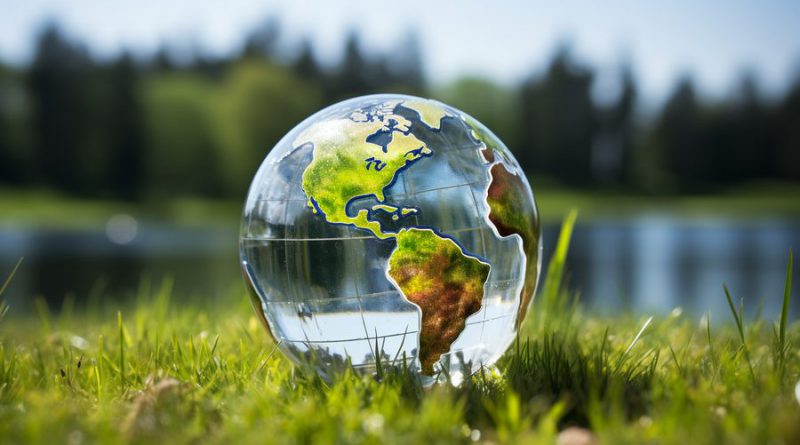How Climate Change is Affecting Golf
How Is Climate Change Affecting Golf?
Climate change is affecting golf through erratic weather, with droughts drying fairways, floods submerging courses, and rising sea levels eroding coastal greens. The sport’s significant environmental impact, especially its high water and chemical use, is under scrutiny, pushing for urgent sustainable reforms.

Golf’s Climate Conundrum
In the grand scheme of global concerns, the climate crisis is teeing up some formidable challenges, not just for our daily lives but for our favorite pastimes as well. Enter golf, the sport of sprawling greens and meticulous maintenance.
While tennis has its courts and soccer its pitches, only golf demands vast expanses of flawlessly manicured grasslands. But as our planet’s thermostat goes haywire, with scorching droughts on one end and torrential downpours on the other, our beloved golf courses are finding themselves in the line of fire.
And if battling the elements wasn’t enough, golf’s once-pristine reputation is now getting muddied, facing scrutiny in the era of environmental consciousness. So, let’s dive into the rough to uncover how the changing climate is reshaping the landscape of golf, both on and off the course.
Recommended:
- Best Golf Rain Weather Apparel Gear For 2023 And 2024
- Golf Balls In The Cold And Why Your Golf Balls Behave Differently
- Teeing Off Green: The Case for Recycled And Used Golf Balls
Fairways to the Future: Golf’s Tryst with Climate Change
The Vanishing Greens: Golf’s Landscape Under Siege
Ah, the lush, verdant fairways – the hallmark of any golfer’s paradise. But lately, these sprawling greens seem to be playing a game of hide and seek. With unpredictable weather patterns, some courses are more akin to marshlands, while others resemble the Sahara. Droughts are leaving patches drier than a golfer’s humor, and when the rains do come, they’re more like monsoons, turning bunkers into mini lakes. 1 The once predictable game of golf is now at the mercy of Mother Nature’s mood swings. And as for those coastal courses? Rising sea levels are giving a whole new meaning to the term “water hazard.”


The Future Forecast: Cloudy with a Chance of Uncertainty
Peering into golf’s crystal ball, the outlook seems, well, a tad foggy. With climate change ramping up, traditional golf might need a makeover. Imagine swapping out the serene countryside courses for urban golf landscapes, where concrete replaces the green and cooling towers serve as obstacles. Or consider the Scottish skiing industry, which might vanish in the next half-century due to milder winters. If skiing can face such a fate, golf isn’t far behind. The sport might need to adapt, innovate, and perhaps even reinvent itself to stay relevant and sustainable in a warming world.2
Reputation on the Line: Golf’s Environmental Scorecard
Once upon a time, golf was the epitome of leisure and luxury. But in today’s eco-conscious era, the sport’s vast water consumption and expansive land use are under the microscope. Golf’s carbon footprint, from water-guzzling greens to carbon-intensive maintenance, is drawing more than just side glances. The game, known for its precision and standards, now faces the challenge of balancing tradition with sustainability. As the world becomes more environmentally aware, golf’s reputation is teetering on the edge. The sport must now prove that it can be both a game of legends and a champion for the planet.3
Shop Pre-Owned Clubs By Condition




Golf is being impacted by climate change in numerous ways, such as:
- Water shortages: Golf courses need a lot of water, but climate change worsens shortages. The Cape Town Open moved inland in 2018 due to drought.
- Extreme weather: Climate change is causing more extreme weather events, such as floods and storms, which can damage golf courses and make them unplayable.
- Coastal erosion: Rising sea levels from climate change threaten coastal golf courses. For instance, Montrose Golf Links in Scotland has seen the North Sea advance 70 meters towards the course in the last 30 years.
- Reputation: Golf’s environmental impact has caused it to lose popularity. French activists filled golf holes with cement to protest water usage exemptions.4
- Cost: Adapting golf courses to be more sustainable in the face of climate change will require significant investment, which may make golf courses unsustainable.
Climate change poses a serious threat to golf’s future. To survive, the sport needs to adhere to new standards.
Recommended:
- Used Golf Balls: The Process From Dirty to Delivered
- Used Golf Balls – Should You?
- The Complete Used Golf Clubs Buying Guide: How To Buy And Sell
How Golfers Can Reduce Their Carbon Footprint
Golfers can play a role in reducing the carbon footprint of the sport. Here are several practical eco-friendly golfing practices that can help enthusiasts contribute to a more sustainable future for golf:
- Walking the Course: Opting to walk the course rather than using a golf cart is not only an excellent form of exercise but also an environmentally responsible choice. Walking not only reduces carbon emissions but also allows players to immerse themselves in the natural beauty of the course.
- Choose Eco-Friendly Equipment: When it’s time to invest in new golf equipment, consider eco-friendly options. Some manufacturers offer clubs and balls made from sustainable materials. Choosing these products can make a difference in reducing the environmental impact of golf.
- Support Sustainable Courses: Golfers can actively support golf courses that are committed to sustainability. These courses often employ eco-conscious maintenance practices, including the use of electric mowers and renewable energy sources. By playing on such courses, golfers endorse and incentivize sustainability initiatives in the golf industry.
- Reduce, Reuse, Recycle: Encourage and practice responsible waste management on the course. Dispose of trash in designated receptacles, and recycle where possible. Reducing single-use plastics by carrying a refillable water bottle and using reusable golf tees can also make a difference.
- Mindful Water Usage: Golfers can play their part in conserving water by adhering to local water restrictions and reporting any leaks they notice on the course. Every drop counts in maintaining a sustainable golf course.
- Eco-Conscious Behavior: Practicing respectful behavior on the course, like repairing divots and ball marks, not only preserves the quality of the greens but also supports the ecological balance of the golf course.
- Learn About Sustainability: Take the initiative to educate yourself and others about sustainable golf practices. Stay informed about the environmental efforts of courses and golf organizations, and actively engage in discussions on how to further reduce the sport’s carbon footprint.
Final Thoughts on how Climate Change is Affecting Golf
Climate change is not a distant threat but a present reality, affecting every facet of our lives, including the beloved sport of golf. Golf courses are feeling the effects of rising temperatures, extreme weather events, and shifting ecosystems. However, the golf industry, along with golfers, has recognized the need for change and is taking proactive steps to mitigate these effects.
The future of golf hinges on sustainable practices, from course design and maintenance to golfers’ choices on the fairway. As we adapt to a changing climate, we have the opportunity to make golf more resilient, environmentally responsible, and enjoyable for generations to come. It’s a challenge that golfers and the industry must embrace collectively. In doing so, we can ensure that golf remains the cherished game of a lifetime!
Recommended:
- Women’s Golf Clubs Buyers Guide – What You NEED To Know!
- 3 Ways To Know How Long Golf Clubs Will Last
- Is Buying Pre-Owned Golf Clubs For You?
Writer/Editor: Danny Kapp is a passionate golf enthusiast and an 8-year veteran golf blog writer for Rock Bottom Golf, offering his unique perspective on the game. With a keen eye for detail, he covers various aspects of golf, ranging from technical insights to the latest trends in golf equipment and golf technology.
Resources:
- Climate change crisis: Golf courses on borrowed time as Earth’s weather patterns become wilder. (2021, December 14). CNN. https://www.cnn.com/2021/12/08/golf/climate-change-sustainability-spt-intl-cmd/index.html ↩︎
- Sport 2050: No green future for golf? (n.d.). BBC Sport. https://www.bbc.com/sport/56972370 ↩︎
- Climate change threatens future of golf: report. https://phys.org/news/2018-02-climate-threatens-future-golf.html ↩︎
- Steffgen, A. (2022, September 27). The future of golf in a world of climate change. FanSided. https://fansided.com/2022/09/27/golf-future-climate-change/ ↩︎






Pingback: Haunted Golf Courses: Ghost Stories From The Greens
Pingback: DIY Golf Decor Guide: Creative Golf-Themed Projects - Golf Blog | RockBottomGolf.com
Pingback: Golfing with Technology: AI, App and VR Technology
Pingback: Yoga for Golf: Finding Balance and Power on the Green
Pingback: Golf and Wellness: Top Retreats for a Holistic Golfing Experience - Golf Blog | RockBottomGolf.com
Pingback: The World's Best Golf Course Dining and Eateries
Pingback: The Cost of Golf: Breaking Down the Expenses of Playing Golf
Pingback: Finding Your Ideal Fit in Golf Apparel: The Golfer's Guide to Sizing
Pingback: First Set Of Golf Clubs: Tips for Buying
Pingback: Couples Golfing: Strengthening Bonds on the Green Together